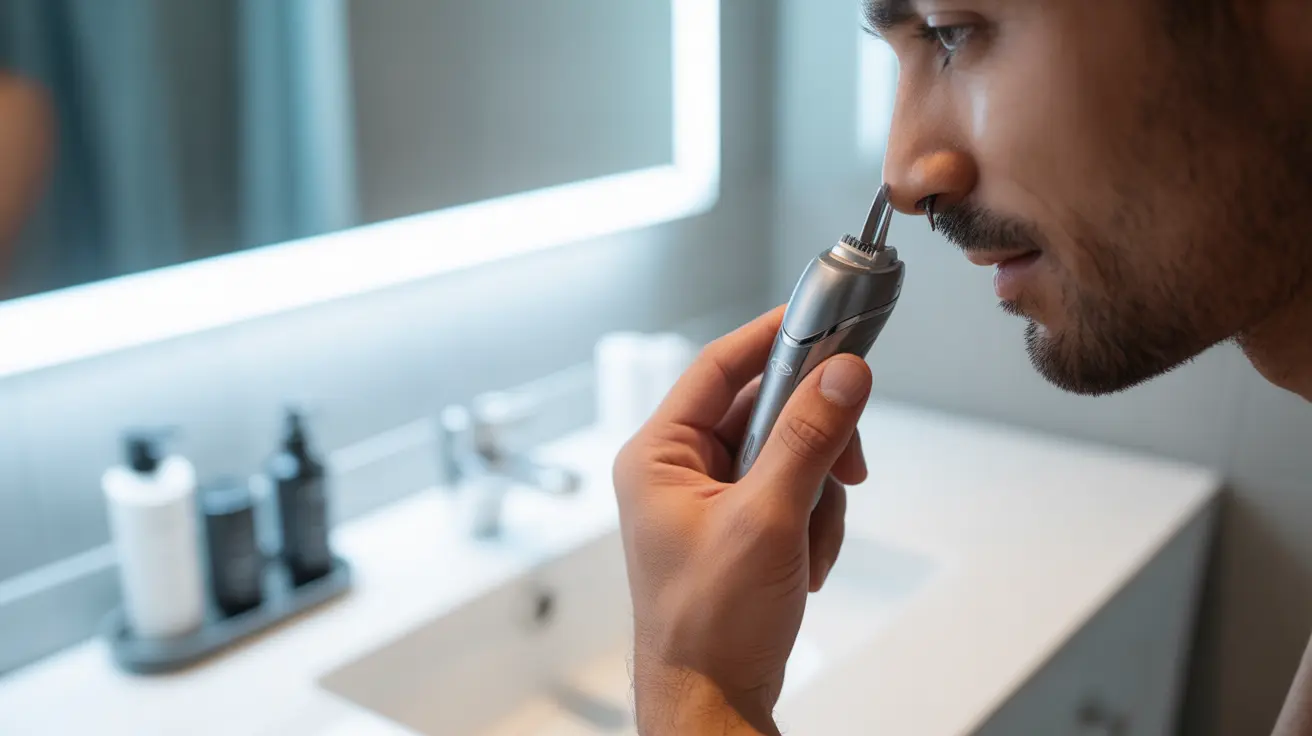Nose hair serves an essential protective function, filtering out dust, allergens, and other particles from the air we breathe. However, when these hairs become visibly noticeable outside the nostrils, many people seek safe removal methods. Understanding how to get rid of nose hair properly is crucial for maintaining both aesthetics and nasal health.
This comprehensive guide explores various nose hair removal techniques, their safety considerations, and best practices to help you make an informed decision about managing unwanted nose hair growth.
Safe Methods for Nose Hair Removal
Electric Trimming: The Gold Standard
Electric nose hair trimmers represent the safest and most efficient method for managing nose hair. These devices are specifically designed to trim excess hair without damaging the sensitive nasal tissue or removing hair completely.
Key benefits of electric trimmers include:
- Built-in safety guards to prevent cuts
- Precise trimming capability
- Easy maintenance and cleaning
- Battery-operated convenience
- Minimal risk of infection
Manual Trimming Options
Specialized manual scissors with rounded tips offer another safe approach to nose hair removal. However, these require careful handling and good lighting to avoid accidents.
Important safety tips for manual trimming:
- Use only scissors designed specifically for nose hair
- Trim in a well-lit area
- Clean tools thoroughly before and after use
- Avoid inserting scissors too deep into the nostril
Methods to Avoid
Waxing and Plucking
While some salons offer nose hair waxing services, this method carries significant risks. Waxing or plucking nose hairs can lead to:
- Painful inflammation
- Increased infection risk
- Ingrown hairs
- Damaged nasal tissue
- Compromised natural filtering system
Chemical Depilatories
Chemical hair removal products should never be used inside the nose. These harsh chemicals can cause:
- Severe chemical burns
- Allergic reactions
- Respiratory irritation
- Damage to mucous membranes
Best Practices for Nose Hair Management
To maintain both safety and effectiveness when managing nose hair:
- Trim rather than remove completely
- Maintain good hygiene practices
- Use proper lighting and tools
- Follow manufacturer instructions
- Replace trimmer heads regularly
- Clean equipment after each use
Frequently Asked Questions
What is the safest way to get rid of visible nose hair without harming nasal health?
The safest method is using an electric nose hair trimmer designed specifically for this purpose. These devices maintain necessary hair protection while removing excess visible hair, and they include safety features to prevent injury to sensitive nasal tissue.
Can trimming nose hair cause infections or worsen allergies?
When done properly with clean tools, trimming nose hair shouldn't cause infections or worsen allergies. However, removing too much hair might temporarily reduce your natural filtering system, potentially increasing exposure to allergens and particles.
Are methods like plucking or waxing nose hair safe, and what risks do they carry?
Plucking and waxing nose hair are not recommended as they can lead to infections, ingrown hairs, and painful inflammation. These methods remove hair from the root, disrupting your nose's natural filtering system and potentially allowing bacteria to enter through empty follicles.
How often should I trim my nose hair for best results and minimal irritation?
Most people find trimming every 1-2 weeks sufficient. However, the frequency depends on individual hair growth rates. Wait until hair becomes visible outside the nostril before trimming, and avoid over-trimming, which can cause irritation.
Is laser hair removal an effective and safe option for permanent nose hair reduction?
Laser hair removal is not recommended for inside the nose due to the sensitivity of nasal tissue and the important protective function of nose hair. This procedure could potentially damage the delicate nasal lining and compromise your natural filtering system.




